
International Journal of Applied Earth Observation and Geoinformation
Scope & Guideline
Bridging Science and Technology for Global Change.
Introduction
Aims and Scopes
- Remote Sensing Applications:
The journal emphasizes the use of remote sensing technologies for monitoring environmental changes, land use, and natural resources. Papers often explore applications in agriculture, forestry, water management, and disaster response. - Geospatial Data Integration:
Research published in this journal frequently integrates various data sources, including satellite imagery, UAV data, and ground-based observations, to enhance spatial analysis and improve the accuracy of environmental assessments. - Machine Learning and AI in Geospatial Analysis:
The journal highlights the application of machine learning and artificial intelligence techniques to extract meaningful insights from complex geospatial datasets, facilitating advancements in predictive modeling and automated classification. - Sustainable Development and Environmental Monitoring:
A core aim of the journal is to support sustainable development initiatives through the application of geoinformation technologies in environmental monitoring, assessing climate change impacts, and managing natural resources. - Innovative Methodologies and Tools:
The journal promotes the development and application of novel methodologies and tools for data processing, analysis, and visualization in the context of earth observation and geoinformation.
Trending and Emerging
- Deep Learning and AI Techniques:
There is a marked increase in research utilizing deep learning and AI techniques for geospatial data analysis, including applications in image classification, anomaly detection, and predictive modeling, highlighting the integration of advanced computational methods. - Multi-Modal and Multi-Scale Approaches:
Emerging trends indicate a growing interest in multi-modal and multi-scale analyses that combine different types of data (e.g., satellite, UAV, ground-based) to improve the accuracy and robustness of environmental assessments. - Climate Change Impact Studies:
Research focusing on the impacts of climate change on various ecosystems and socio-economic systems is on the rise, with studies utilizing remote sensing data to monitor changes and inform adaptation strategies. - Real-Time Monitoring and Big Data Analytics:
The journal is increasingly publishing studies that emphasize real-time monitoring of environmental changes using big data analytics and cloud computing technologies, reflecting the need for timely data in decision-making. - Community and Citizen Science Integrations:
There is a growing trend towards integrating community and citizen science data with traditional remote sensing approaches, enhancing data collection efforts and fostering public engagement in environmental monitoring.
Declining or Waning
- Traditional Land Cover Mapping:
There has been a noticeable decline in papers focusing on conventional land cover mapping techniques, as researchers increasingly adopt advanced methods such as machine learning and deep learning for more accurate and automated classifications. - Static Environmental Assessments:
Research centered around static assessments of environmental conditions is becoming less prominent. The journal is moving towards dynamic monitoring approaches that emphasize real-time data collection and analysis. - Single-Source Remote Sensing Studies:
Papers that rely solely on single-source remote sensing data are appearing less frequently, as the integration of multi-source data (e.g., combining optical and radar data) is being prioritized for more comprehensive analyses. - Basic GIS Applications:
There is a diminishing emphasis on basic GIS applications without advanced analytical frameworks, as the field increasingly requires complex analyses and modeling to address contemporary environmental challenges. - Generalized Environmental Models:
Research that presents generalized environmental models without considering local contexts and specific case studies is less common, with a growing preference for studies that address localized issues through targeted approaches.
Similar Journals
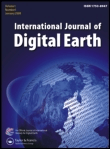
International Journal of Digital Earth
Connecting disciplines for a sustainable digital Earth.Welcome to the International Journal of Digital Earth, a premier open-access journal published by Taylor & Francis Ltd, dedicated to advancing the field of digital geoscience. With its ISSN 1753-8947 and E-ISSN 1753-8955, this journal has established itself as a vital resource for scholars and practitioners alike since its inception in 2008. The journal is at the forefront of interdisciplinary research, showcasing a diverse scope from Earth sciences to computer science applications, evidenced by its impressive ranking in the 2023 Scopus database. It holds a Q1 categorization in Earth and Planetary Sciences, with a percentile rank among the top 16% of its peers, and also stands out in the Q2 quartile for both Computer Science Applications and Software disciplines. The journal's commitment to open access, established in 2022, underscores its dedication to disseminating knowledge and fostering collaboration. By providing a platform for high-quality research, the International Journal of Digital Earth plays a critical role in addressing the complexities of our changing planet through innovative digital solutions. Whether you are an experienced researcher or a student, this journal is an essential addition to your academic toolkit.
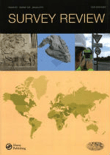
SURVEY REVIEW
Bridging Academia and Industry with Essential ResearchSURVEY REVIEW is a distinguished journal published by Taylor & Francis Ltd, focusing on a diverse range of disciplines including Civil and Structural Engineering, Computers in Earth Sciences, and Earth and Planetary Sciences. With an ISSN of 0039-6265 and an E-ISSN of 1752-2706, this journal has been a vital resource for scholarly communication since its inception in 1963. Positioned within the Q2 and Q3 quartile categories according to the latest rankings, it is recognized for its significant contributions to advancing knowledge in multiple fields, specifically holding a rank of 64/159 in Earth and Planetary Sciences and 32/73 in Computers in Earth Sciences. Researchers, professionals, and students benefit from its critical insights into complex engineering and scientific challenges. Although SURVEY REVIEW is not open access, it remains a highly cited journal, making it an essential avenue for disseminating pivotal findings that impact both academia and industry practices.

Geomatik
Empowering research through open access in geomatics.Geomatik is a pioneering open-access journal dedicated to advancing the field of geomatics, encompassing disciplines such as geospatial data analysis, remote sensing, and geographic information systems. Founded in 2016 by the esteemed Geomatik Journal publisher, this peer-reviewed platform aims to disseminate high-quality research and innovative methodologies to a global audience. With its E-ISSN 2564-6761, Geomatik facilitates accessibility to cutting-edge studies that address vital challenges in environment monitoring, urban planning, and spatial data management. The journal not only encourages collaboration among researchers and practitioners but also serves as an essential resource for students seeking to deepen their understanding of geomatic sciences. Its commitment to open access fosters scholarly exchange and enhances visibility for authors, contributing to significant advancements within the geomatics community.

Boletim de Ciencias Geodesicas
Pioneering Discoveries in the Dynamic World of GeodesyBoletim de Ciências Geodésicas is an esteemed academic journal published by the Universidade Federal do Paraná within its Centro Politécnico. Focused on the dynamic field of Earth and Planetary Sciences, this Open Access journal has been a pivotal resource since 1997, fostering the dissemination of critical research and innovative methodologies. With an impact factor indicative of its relevance in the discipline, Boletim de Ciências Geodésicas ranks in the Q3 quartile for Earth and Planetary Sciences as of 2023, showcasing its commitment to quality scholarship in a competitive field. Researchers and students alike will benefit from access to cutting-edge findings, given its broad scope that encompasses various aspects of geodesy and related sciences. The journal's convergence of research from 2005 to 2024 ensures that it remains at the forefront of emerging trends and fundamental developments in the discipline, further enhancing its esteemed reputation in the academic community.
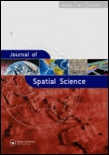
Journal of Spatial Science
Fostering Innovation in Geography and Environmental ScienceThe Journal of Spatial Science, published by Taylor & Francis Ltd, serves as a prominent platform for the dissemination of research in the interdisciplinary fields of geography, atmospheric science, and energy. With an ISSN of 1449-8596 and an E-ISSN of 1836-5655, this journal has established itself as a vital resource since its inception in 2004, boasting an impressive convergence period extending to 2024. Recognized in the Q3 quartile for Atmospheric Science and Energy (miscellaneous), and achieving a Q2 classification in Geography, Planning and Development in 2023, the journal not only reflects the evolving complexities of spatial science but also underscores its increasing relevance in addressing contemporary global challenges. The journal holds a commendable position in Scopus rankings, with notable placements in various categories, further highlighting its academic significance. Researchers, professionals, and students are encouraged to engage with the rich content offered, as the Journal of Spatial Science remains committed to advancing knowledge and fostering discussions pertinent to spatial analysis and its applications.
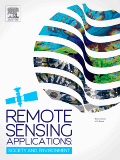
Remote Sensing Applications-Society and Environment
Connecting disciplines to drive impactful environmental research.Remote Sensing Applications-Society and Environment, published by Elsevier, stands at the forefront of interdisciplinary research, bridging the fields of remote sensing and environmental science. With an impressive impact factor and recognition within the Q1 quartile in both Computers in Earth Sciences and Geography, Planning and Development, the journal is a vital resource for researchers, professionals, and students committed to advancing our understanding of environmental dynamics through innovative remote sensing technologies. Since its inception in 2015, this journal has cultivated a rich repository of knowledge, addressing pertinent societal and environmental issues, making it a leading source for transformative applications in the field. Accessible and relevant, articles published here not only explore theoretical advancements but also practical implications, ensuring research findings are effectively disseminated to stimulate further inquiries and applications in sustainability and ecological stewardship. The journal's strong Scopus rankings, particularly within its categories, solidify its role as an essential platform for scholarly exchange.

Remote Sensing
Advancing Knowledge in Earth and Planetary SciencesRemote Sensing is a highly esteemed journal published by MDPI, dedicated to the domain of Earth and Planetary Sciences. With an impressive impact factor reflected in its rank of #16 out of 195 in the general Earth and Planetary Sciences category, this journal achieves a commendable 92nd percentile among its peers, indicating its significant contribution to the field. Since its inception in 2009 as an Open Access journal, it has enabled researchers, professionals, and students from around the globe to access high-quality, peer-reviewed articles that delve into the latest advancements in remote sensing technologies, methodologies, and applications. Based in Switzerland, Remote Sensing serves as a vital platform for disseminating innovative research that supports and enhances our understanding of Earth's processes and environments, ensuring scientific knowledge remains freely accessible and impactful.
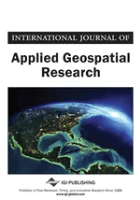
International Journal of Applied Geospatial Research
Unveiling the potential of geospatial applications for informed decision-making.International Journal of Applied Geospatial Research is an esteemed publication dedicated to advancing the field of geospatial research. Published by IGI Global, this journal provides a platform for innovative studies from 2010 to 2024 that encourage multidisciplinary contributions across Earth and planetary sciences and geography. While currently not offering open access, the journal's focus on applied research ensures that it remains highly relevant to both academics and industry professionals alike. With an ISSN of 1947-9654 and an E-ISSN of 1947-9662, it has been indexed in various databases, reflecting its emerging significance with rankings such as Q4 in Earth and Planetary Sciences and Geography according to Scopus, placing it at the intersection of critical research and practical application. Researchers, professionals, and students can expect insightful articles that enhance understanding and drive innovation in geospatial applications essential for informed decision-making in a rapidly changing world.

Advances in Geodesy and Geoinformation
Connecting Scholars and Practitioners in Geospatial ScienceAdvances in Geodesy and Geoinformation is a pioneering journal published by the Polish Academy of Sciences, dedicated to the dynamic fields of geodesy and geoinformation. With an ISSN of 2720-7242 and an E-ISSN of 2720-7242, it offers an open-access platform since 2022, making cutting-edge research readily accessible to a global audience. The journal aims to foster the dissemination of innovative methodologies, technologies, and applications in the realms of geospatial data and earth sciences. Researchers, professionals, and students alike can benefit from the high-quality articles that contribute to advancing knowledge in this critical area, bridging theoretical insights and practical solutions. Situated in the heart of Poland, at PL Defilad 1, Warszawa, the journal not only reflects the nation's academic rigor but also positions itself as a crucial hub for international collaboration and knowledge exchange in geodesy and geoinformation.

Revue Internationale de Geomatique
Pioneering Research in Spatial Information ScienceRevue Internationale de Geomatique (ISSN: 1260-5875, E-ISSN: 2116-7060) is a prestigious journal published by TECH SCIENCE PRESS, dedicated to advancing the field of geomatics. This journal serves as a vital platform for disseminating significant research findings, cutting-edge methodologies, and innovative applications within the realm of spatial data and technology. With an emphasis on interdisciplinary studies, it fosters collaboration among researchers, professionals, and students across various domains, including environmental science, urban planning, and geographic information systems (GIS). Although not an open-access journal, Revue Internationale de Geomatique maintains a rigorous peer-review process ensuring the publication of high-quality articles that contribute to the evolving landscape of geomatics. Given its relevance and commitment to scholarly excellence, this journal is a crucial resource for advancing knowledge and practices in the ever-growing field of spatial information science.